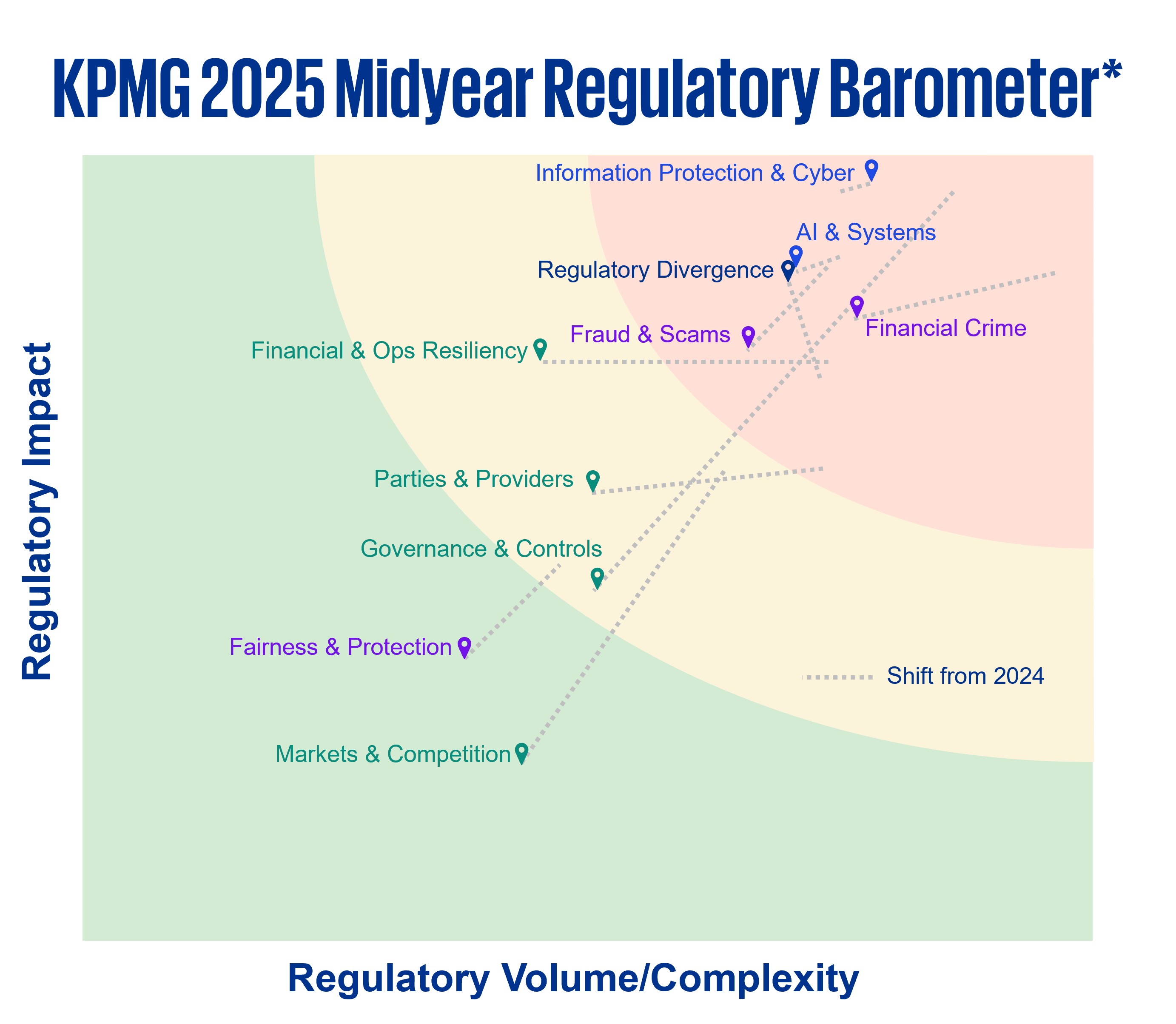CCO Insight: Compliance Amidst Regulatory & Policy Changes
Short- and long-term actions amid uncertainty

KPMG discusses the role of Compliance with Chief Compliance Officers (CCOs) amidst the uncertainty of ongoing regulatory and policy changes. CCOs consider both short- and long-term actions for Compliance to mitigate and anticipate business impacts.
Key themes and insights shared include:
Policy & Regulatory Focus
- Process and Operational Controls: Tracking changes and triaging (e.g., implications to supply chains/vendors, government contractors).
- Executive and Agency Orders/Actions: Evaluating impacts to culture/ethics, framing of Compliance programs, access/changes to funding, pricing, etc.
- Areas of Focus: Including tariffs, third party, data privacy, and state and global divergence.
Short-Term Actions
- Communication: Reinforcing ‘doing the right thing’ (notifications on Compliance importance, corporate ethics).
- Monitoring: Ensuring that events/changes do not negatively diminish ethics and compliance; conducting expanded hotline analytics.
Mid-/Long-Term Actions
- Supervision/Inspection/Enforcement Process:
- Anticipating elongated approval processing due to regulatory capacity constraints.
- Adapting to potential changes to areas of supervision, investigation, and enforcement focus.
- Identifying opportunities for more open dialogue.
- Uncertainty Preparedness:
- Using prior lessons learned to enhance Compliance controls (e.g., scripts, exception controls).
- Actioning potential impacts (e.g., geographic locations, use of providers, changes to supply chains, etc.).
KPMG Perspective

The rapid pace of changes presents substantial regulatory shifts, notably:
- Historic regulatory process “norms” are being challenged.
- Abrupt changes in regulatory focus are adding to uncertainty.
- Regulatory policies are increasingly divergent.
Supported by the AI-enabled KPMG Regulatory Insights Barometer,* KPMG measures overall regulatory intensity as the combination of three attributes—Volume, Complexity, and Impact—to assess regulatory pressure and direction of change.
*Note: Patents pending for the KPMG Regulatory Insights Barometer Methodology and all related visuals. The Barometer measures overall regulatory intensity (separate from tax and/or economic policy)
In the current regulatory environment, businesses must:
- Avoid Risk Complacency: Despite new Agency priorities, shifts in enforcement intensity, and selected rule recissions/withdrawals, existing regulations still stand and require ongoing adherence.
- Be Alert to New Tailoring and Frameworks: Expect continued withdrawals of proposed rules, modifications/tailoring to existing rules, and the increasing use of 'frameworks' and statements versus guidance.
- Expect Continued Investigation/Enforcement Shifts: Expect federal enforcement activities to focus on the “letter of the law” and 'direct harm' while states begin to increase activity.
- Anticipate Expanded (and at Times Unexpected) Divergence: Expect the Administration to continue to pressure businesses, countries, states and agencies.
Explore more

Ten Key Regulatory Challenges: 2025 Mid-Year
Shifting though the bump(er)s

Ten Key Regulatory Challenges: 2025 Mid-Year Report
Growing regulatory divergence and fragmentation are key trends to watch in second half of 2025, according to KPMG's latest report.

First 100 Days: Where (De?)Regulation Goes from Here
Navigating regulatory uncertainty
Subscribe to receive regulatory and compliance transformation insights
By registering you will periodically receive additional compliance-related communications from KPMG.